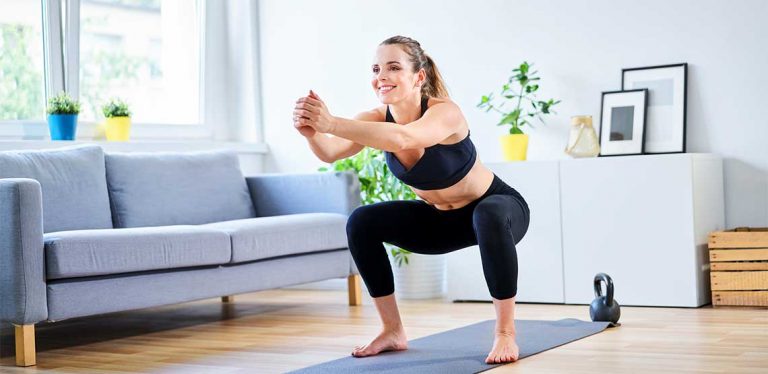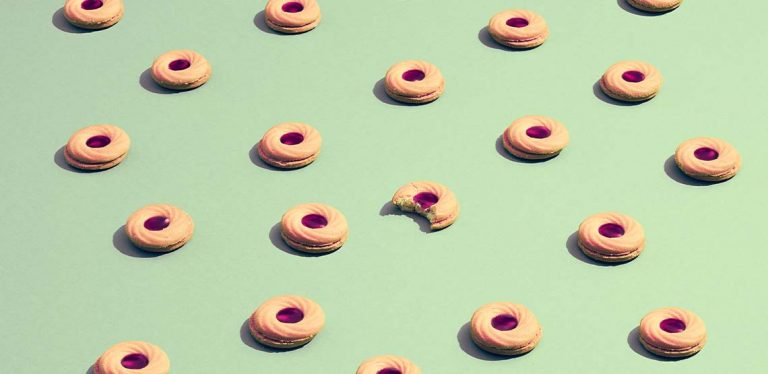Good Workouts to Do at Home
Inactivity has increased since the COVID-19 pandemic began. Working from home with most gyms closed and outdoor activity limitations are contributing to a lack of physical activity among adults. A study from the British Journal of Sports Medicine shows that home confinement resulted in a 28% increase in sitting time (from 5 hours to 8 hours per day) and a 33% decrease in physical activity (from 108 minutes to 72 minutes per week). Due to this, we will take a look at good workouts to do at home.
It is important to know that even in the comfort of your own home, there are ways to stay active and achieve that post-workout high. Regular physical activity is especially important to keep your mind and body healthy. Read on for our list of four good workouts to do at home!
Benefits of Regular Exercise
According to the American Heart Association, benefits of regular exercise include:
- Decreased risk of heart disease, stroke, type 2 diabetes, high blood pressure, dementia and Alzheimer’s, different types of cancer, and some complications of pregnancy
- Improved quality of sleep
- Better brain activity
- Controls weight gain and obesity
- Improved bone health, posture, and balance
- Lessens the symptoms of depression and anxiety
- Superior quality of life and sense of overall well-being
What is Functional Fitness Exercise?
Functional fitness exercise refers to movements incorporated in exercise which mimic our everyday activities. They usually involve multiple joints and muscles working together when performing a single maneuver. These movements can be termed as “natural” as they are used in our day-to-day activities (i.e., squats) as opposed to moment patterns that are only found in the gym (i.e., bicep curls). Functional movements are easier to incorporate in home workouts because they can be performed with limited or no equipment. Let's take a further look at good workouts to do at home.
Functional Fitness Movements Easily Performed at Home
While some people have the luxury of having exercise equipment at home, this section will focus on movements you can do at home using household items or with just your body weight.
Squats
The squat is the cornerstone of the functional fitness movement. This involves raising your center of mass from a seated to standing position. Squats target the muscles of the legs, particularly the quadriceps (front of the thigh), the glutes (buttocks), and the adductors (groin). Doing squats regularly also mobilizes the lower body's joints, particularly the hips, knees, and ankles. The squat is one of the most superior exercises because it can also strengthen your core.
To perform an air squat:
- Start with your feet planted in a shoulder-width stance.
- From a standing position, your hips should descend back then down while keeping your chest upright, and there should be no rounding of the back.
- Lower your hips until they are at least below the knees. Keep your knees in line with your toes. Your heels should stay flat on the floor throughout the movement. Once the lowest point is reached, exhale, push up, and stand up straight with total hip and knee extension.
This exercise can be challenging, but if you want to add more resistance, you can hold an object, such as a bag of water bottles, close to your chest while performing it.
Pushups
Pushups work the pectoralis major and minor (chest muscles), triceps (back of the upper arm), and anterior deltoid (front of the shoulders). Performing this movement with proper form will also strengthen your core while mobilizing the elbows, shoulders, and wrists. Pushups are very scalable and can be made easier, depending on your fitness level.
Related Search Topics (Ads)
The standard pushup can be done as follows:
- Start with a plank position, with the body rigid (where you could draw a straight line from the back of the head to the heels). Position your hands approximately shoulder-width apart placed in front of the nipple line. Your legs should be together with only the balls of your feet touching the ground.
- Slowly lower your chest to the ground, keep your core tight, and move your whole body as a single unit. Keep your elbows close to your body, making sure that the points of your elbows point toward the wall behind you.
- Lower your chest until it touches the floor at the same time as your thighs.
- Once you reach the lowest point, release your hands off the floor and place them back in the same position. This ensures that you perform the movement with the full range of motion. This also avoids “cheat reps” that usually happens once your muscles start to fatigue.
- Finish by pushing off the floor and returning to the first position. If pushing off is too difficult for you, for now, you can scale it down by placing your knees on the ground instead of the balls of the feet (while still keeping in mind to move the body as a single unit).
Burpees
This movement is considered a full-body workout by itself as it involves most major muscles in both the upper and lower body. Burpees are dynamic and fast-paced; so, you can add them to spice up any training session. It is considered a functional movement because it trains you to recruit muscles from the core to the extremities. Even beginners can master the burpee; therefore, it can be utilized in various exercise routines.
The basic steps of burpees involve the following:
- Squat and place your hands on the ground.
- Jump your feet back so you are in the first pushup position.
- Lower your chest and thighs onto the floor while maintaining a straight line from the head to the heels.
- Press yourself back up to the first pushup position.
- Jump and pull your feet back in and so that you are back to your starting position.
- Jump and clap your hands behind your head.
When doing burpees at home, be sure to choose a spot in the house where you will not be hitting anything with your feet when you jump back and that your ceiling is high enough for you to jump and clap behind your head.
Hip Thrusts
Prolonged sitting, especially when mixed with bad posture, makes the muscles on our posterior chain (muscles found at the back) weak. These muscles are particularly important in maintaining our posture and keep our spine healthy. Hip thrusts activate most muscles in our posterior chain, namely the gluteus group of muscles (buttocks), hamstrings (muscles at the back of the thighs), and the erector spinae (muscles around the spine). You only need an elevated surface such as your couch or the edge of your bed to try it.
When performing proper hip thrusts, be sure to keep the following in mind:
- Start with the lower part of your shoulder blades against an elevated surface (like your bed or couch) with your knees bent and feet flat on the ground. Your feet should be shoulder-width apart, with your toes pointing forward. You may rest your elbows on the elevated surface to stabilize yourself.
- Keeping your chin tucked in, push through your heels until your thighs reach parallel to the floor — your legs should form a 90-degree angle.
- Squeeze your glutes at the top, hold for about two to three seconds, then slowly lower your buttocks to the ground to return to the first position.
You may spice up this movement by adding a weighted object on your hips, or you may even perform this with just one leg at a time. However, make sure you have mastered the hip thrust before adding any extra weight.
Summary
The movements discussed in this article are just some of the exercises that you can do at home. They efficiently target almost all the major muscle groups that are affected by too much sitting and being sedentary. Regardless of the exercise movement, any routine can only be effective if done correctly and, more importantly, performed consistently.

